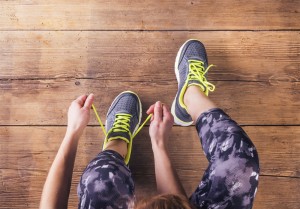Posted on February 13, 2017 by Jenny Cromack
Preparing our body for any type of physical activity could be argued for being the most important part of your training session. Unfortunately, warming up is commonly brushed to a side and replaced with immediate intense exercise, whether it be a set of heavy squats or interval training session. Completing a warm-up does not have to take up a lot of time and done properly will increase your performance in the proceeding session. So, how here is our guide about how to warm up correctly.
What Are The Key Benefits of Warming-up?
- Prevent injury
- Improve performance
- Get psychologically ready to train
A warm-up should be a vital part of all training sessions. Done correctly a warm-up should activate, mobilise and prepare (potentiate) the body and its skeletal muscle. This ultimately will increase flexibility, range of movement and switch on muscles ready for training, a warm-up will be an asset to your training, not a hindrance.
What should an ‘ideal’ warm-up should look like?
Just remember the acronym RAMP.
Raise
Simply raising heart rate and therefore blood flow around the body. A jog, star jump, skip, row or any other low intensity whole body activity is usually perfect for a ‘raise’. Spend no longer than 2 min doing this, you can mix and match the activity depending on what equipment or space is available.
Activate
This is ‘switching-on’ your muscles, your everyday activity may not use the muscles you are going to train so you will need to activate them. Example exercises for this are: Glute-bridge, lunge, squat, plank, TYW’s and MANY more. If you are unsure of any of these exercises, I would advise asking one of the motive8 Team. Aim to target each of the major muscle groups, so 4 to 5 different exercises will suffice.
Mobilise
Mobility before your training is a great way to increase flexibility and range of movement during your key lifts. Again if you are unsure on any exercises then just use the internet. T spine rotations, spiderman’s, leg through, hamstring walkouts and cat-camels are all great ways to mobilise the body.
Potentiate
A scientific way to incorporate jumping into the warm-up. Jumping from two legs and landing on two legs is a simple but good exercise, variations of this include single leg alternatives.
What About Foam Rolling?
Research has suggested that the best use for foam rolling is combining rolling with stretching. Mohr, Long & Goad (2014) found that when participants foam rolled and stretched it increased the range of movement more than when participants only stretch or only foam rolled.
The following is a warm-up protocol that I would advise any of my personal training clients to do prior to any training session. Complete 10 repetitions of everything (if single leg or arm then complete 10 in total, 5 each side), apart from the jump and land, where 3-5 reps will be sufficient.
- Foam roll any tight/specific areas of soreness and discomfort
- T-spine rotations (Mobilising the thoracic spine)
- Glute bridge (Activating the glutes)
- Hamstring bridge (Activating the hamstrings)
- Hamstring lifts (Mobilising the hamstrings)
- Spiderman’s (Mobilising the hip flexor, groin and shoulder)
- Reverse Nordics (Activating the quadriceps)
- BW squat with pause at the bottom (Mobilising and activating the lower extremity at multiple joints)
- Lunge w/OH reach (Mobilising and activating at multiple joints)
- Jump and land softly (potentiating the lower extremity).


